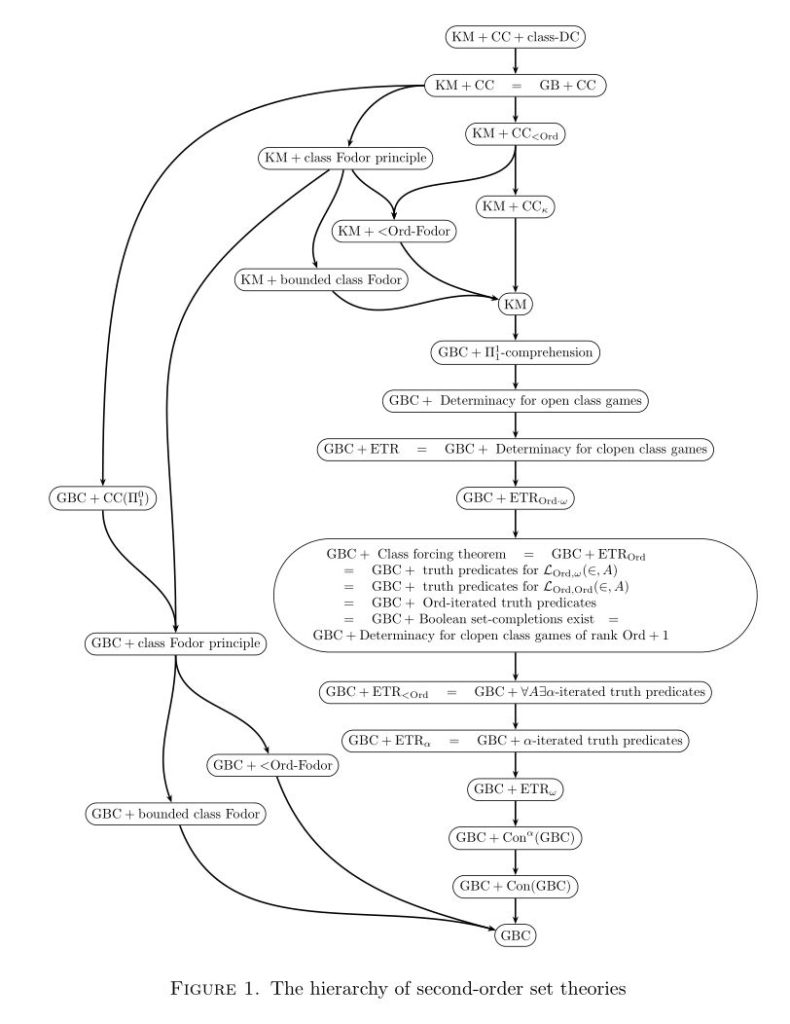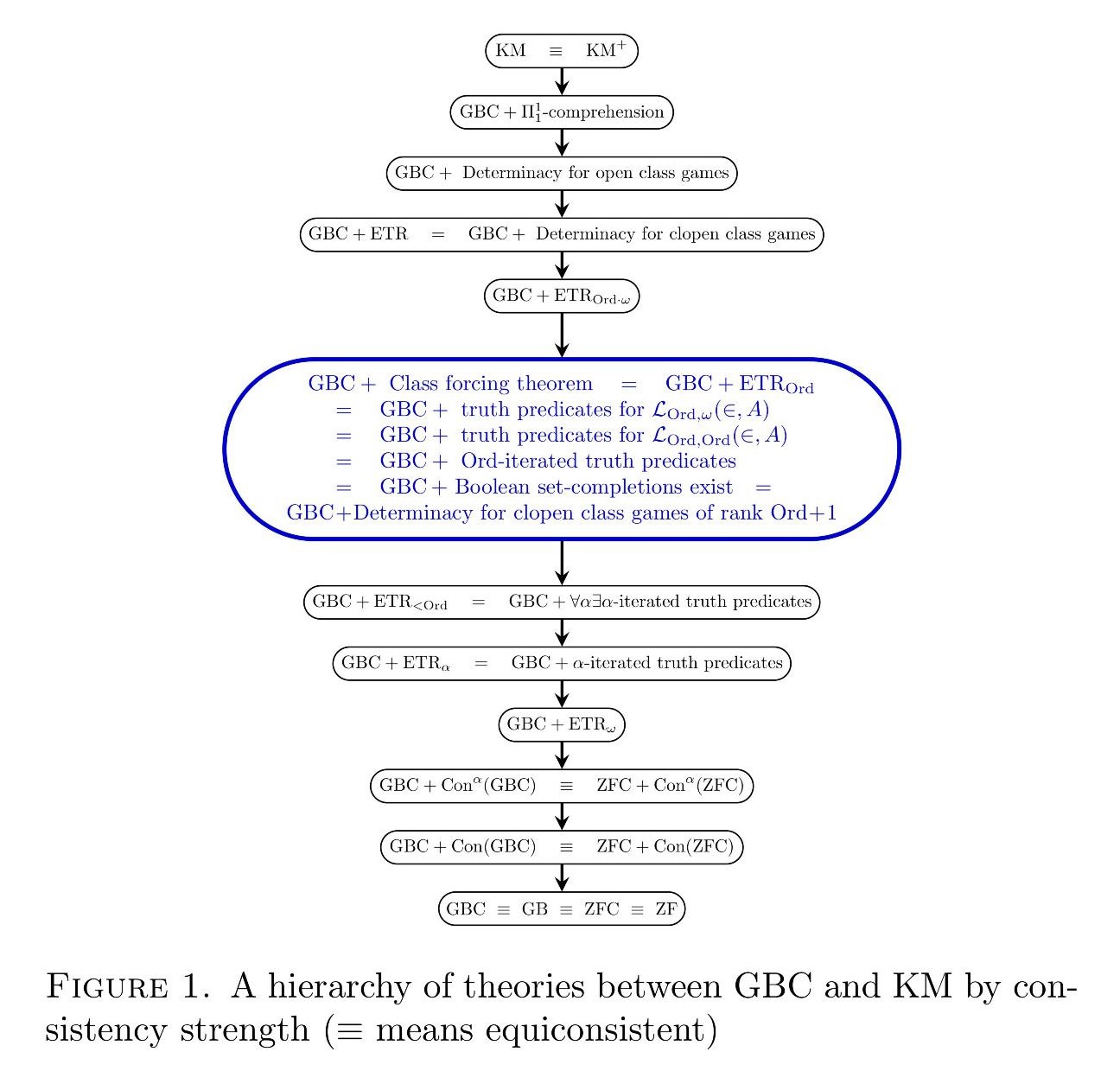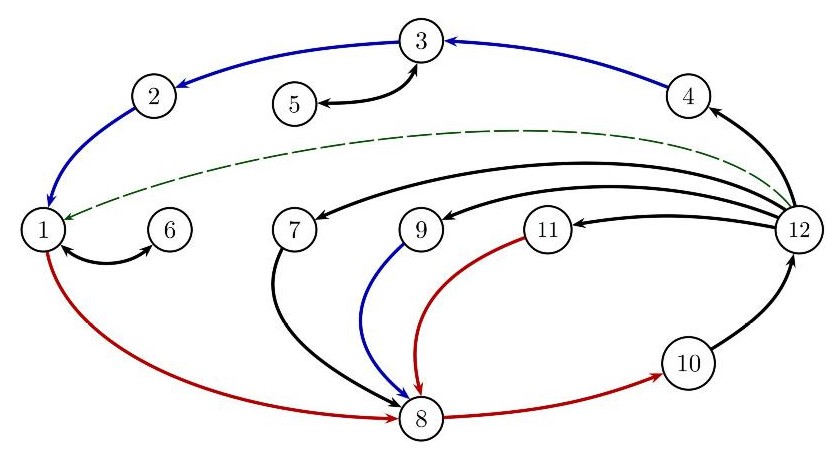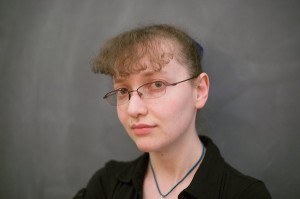[bibtex key=”GitmanHamkins2018:A-model-of-the-generic-Vopenka-principle-in-which-the-ordinals-are-not-Mahlo”]
Abstract. The generic Vopěnka principle, we prove, is relatively consistent with the ordinals being non-Mahlo. Similarly, the generic Vopěnka scheme is relatively consistent with the ordinals being definably non-Mahlo. Indeed, the generic Vopěnka scheme is relatively consistent with the existence of a -definable class containing no regular cardinals. In such a model, there can be no -reflecting cardinals and hence also no remarkable cardinals. This latter fact answers negatively a question of Bagaria, Gitman and Schindler.
The Vopěnka principle is the assertion that for every proper class of first-order structures in a fixed language, one of the structures embeds elementarily into another. This principle can be formalized as a single second-order statement in Gödel-Bernays set-theory GBC, and it has a variety of useful equivalent characterizations. For example, the Vopěnka principle holds precisely when for every class , the universe has an -extendible cardinal, and it is also equivalent to the assertion that for every class , there is a stationary proper class of -extendible cardinals (see theorem 6 in my paper The Vopěnka principle is inequivalent to but conservative over the Vopěnka scheme) In particular, the Vopěnka principle implies that ORD is Mahlo: every class club contains a regular cardinal and indeed, an extendible cardinal and more.
To define these terms, recall that a cardinal is extendible, if for every , there is an ordinal and an elementary embedding with critical point . It turns out that, in light of the Kunen inconsistency, this weak form of extendibility is equivalent to a stronger form, where one insists also that ; but there is a subtle issue about this that comes up with the virtual forms of these axioms, where the virtual weak and virtual strong forms are no longer equivalent. Relativizing to a class parameter, a cardinal is -extendible for a class , if for every , there is an elementary embedding
with critical point , and again one may equivalently insist also that . Every such -extendible cardinal is therefore extendible and hence inaccessible, measurable, supercompact and more. These are amongst the largest large cardinals.
In the first-order ZFC context, set theorists commonly consider a first-order version of the Vopěnka principle, which we call the Vopěnka scheme, the scheme making the Vopěnka assertion of each definable class separately, allowing parameters. That is, the Vopěnka scheme asserts, of every formula , that for any parameter , if is a proper class of first-order structures in a common language, then one of those structures elementarily embeds into another.
The Vopěnka scheme is naturally stratified by the assertions , for the particular natural numbers in the meta-theory, where makes the Vopěnka assertion for all -definable classes. Using the definable -truth predicate, each assertion can be expressed as a single first-order statement in the language of set theory.
In my previous paper, The Vopěnka principle is inequivalent to but conservative over the Vopěnka scheme, I proved that the Vopěnka principle is not provably equivalent to the Vopěnka scheme, if consistent, although they are equiconsistent over GBC and furthermore, the Vopěnka principle is conservative over the Vopěnka scheme for first-order assertions. That is, over GBC the two versions of the Vopěnka principle have exactly the same consequences in the first-order language of set theory.
In this article, Gitman and I are concerned with the virtual forms of the Vopěnka principles. The main idea of virtualization, due to Schindler, is to weaken elementary-embedding existence assertions to the assertion that such embeddings can be found in a forcing extension of the universe. Gitman and Schindler had emphasized that the remarkable cardinals, for example, instantiate the virtualized form of supercompactness via the Magidor characterization of supercompactness. This virtualization program has now been undertaken with various large cardinals, leading to fruitful new insights.
Carrying out the virtualization idea with the Vopěnka principles, we define the generic Vopěnka principle to be the second-order assertion in GBC that for every proper class of first-order structures in a common language, one of the structures admits, in some forcing extension of the universe, an elementary embedding into another. That is, the structures themselves are in the class in the ground model, but you may have to go to the forcing extension in order to find the elementary embedding.
Similarly, the generic Vopěnka scheme, introduced by Bagaria, Gitman and Schindler, is the assertion (in ZFC or GBC) that for every first-order definable proper class of first-order structures in a common language, one of the structures admits, in some forcing extension, an elementary embedding into another.
On the basis of their work, Bagaria, Gitman and Schindler had asked the following question:
Question. If the generic Vopěnka scheme holds, then must there be a proper class of remarkable cardinals?
There seemed good reason to expect an affirmative answer, even assuming only , based on strong analogies with the non-generic case. Specifically, in the non-generic context Bagaria had proved that was equivalent to the existence of a proper class of supercompact cardinals, while in the virtual context, Bagaria, Gitman and Schindler proved that the generic form was equiconsistent with a proper class of remarkable cardinals, the virtual form of supercompactness. Similarly, higher up, in the non-generic context Bagaria had proved that is equivalent to the existence of a proper class of -extendible cardinals, while in the virtual context, Bagaria, Gitman and Schindler proved that the generic form is equiconsistent with a proper class of virtually -extendible cardinals.
But further, they achieved direct implications, with an interesting bifurcation feature that specifically suggested an affirmative answer to the question above. Namely, what they showed at the -level is that if there is a proper class of remarkable cardinals, then holds, and conversely if holds, then there is either a proper class of remarkable cardinals or a proper class of virtually rank-into-rank cardinals. And similarly, higher up, if there is a proper class of virtually -extendible cardinals, then holds, and conversely, if holds, then either there is a proper class of virtually -extendible cardinals or there is a proper class of virtually rank-into-rank cardinals. So in each case, the converse direction achieves a disjunction with the target cardinal and the virtually rank-into-rank cardinals. But since the consistency strength of the virtually rank-into-rank cardinals is strictly stronger than the generic Vopěnka principle itself, one can conclude on consistency-strength grounds that it isn’t always relevant, and for this reason, it seemed natural to inquire whether this second possibility in the bifurcation could simply be removed. That is, it seemed natural to expect an affirmative answer to the question, even assuming only , since such an answer would resolve the bifurcation issue and make a tighter analogy with the corresponding results in the non-generic/non-virtual case.
In this article, however, we shall answer the question negatively. The details of our argument seem to suggest that a robust analogy with the non-generic/non-virtual principles is achieved not with the virtual -cardinals, but with a weakening of that property that drops the requirement that . Indeed, our results seems to offer an illuminating resolution of the bifurcation aspect of the results we mentioned from Bagaria, Gitmand and Schindler, because it provides outright virtual large-cardinal equivalents of the stratified generic Vopěnka principles. Because the resulting virtual large cardinals are not necessarily remarkable, however, our main theorem shows that it is relatively consistent with even the full generic Vopěnka principle that there are no -reflecting cardinals and therefore no remarkable cardinals.
Main Theorem.
- It is relatively consistent that GBC and the generic Vopěnka principle holds, yet ORD is not Mahlo.
- It is relatively consistent that ZFC and the generic Vopěnka scheme holds, yet ORD is not definably Mahlo, and not even -Mahlo. In such a model, there can be no -reflecting cardinals and therefore also no remarkable cardinals.
For more, go to the arcticle:
[bibtex key=”GitmanHamkins2018:A-model-of-the-generic-Vopenka-principle-in-which-the-ordinals-are-not-Mahlo”]







